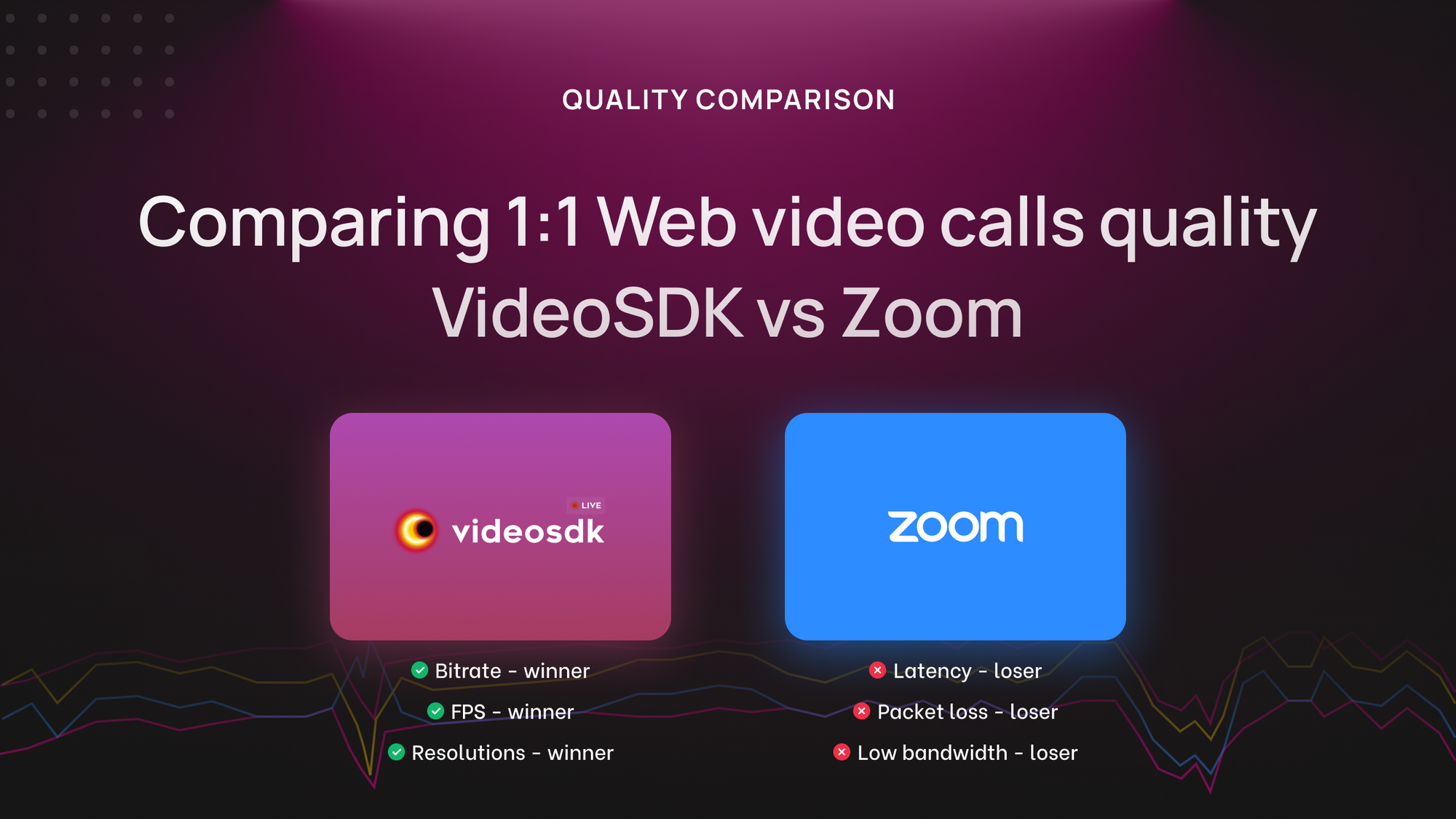If you're here, it's likely that the sudden news about Twilio Programmable Video has thrown a curveball into your quarterly plans. We get it - disruptions in your tech stack can be a game-changer. You might be considering Zoom as your next service provider, but between this twist, remember, it's not just a change but an opportunity to upgrade.
That's why we've conducted a comparison between VideoSDK and Zoom. Check the results before making your decision – let's ensure this unexpected turn becomes a positive step forward.
Quality is the Core!
When it comes to video calls, quality is everything. You can throw in a bunch of cool features or fancy tech, but if you lack quality, it's a deal-breaker. No arguments there! We understand this, and that's why in this blog, we're diving into the nitty-gritty of quality.
Numerous factors can affect the quality of a video call, with the most basic connection being tied to your network. While considering Zoom as your potential service provider, compromising on quality should never be on the table.
That's why we're putting VideoSDK against Zoom in a quality showdown under various network bandwidths. See for yourself how VideoSDK not only keeps up but outperforms standards previously set by Twilio and Zoom.
Setting up the platform
Before we jump into the comparison, let's quickly examine key parameters for our evaluation, including devices, configurations, network throttling, and more.
- We'll be covering standard one-to-one web video calls
- Both the sender and receiver are using MacBook Pro devices.
- In maintaining an unbiased assessment, VideoSDK and Zoom App configurations have been set to default. Since their default settings are almost identical.
- Additionally, for measuring network bandwidth, we'll be using fast.com
Test Scenarios
Now that we've covered the setup, let's cover what scenarios we'll be creating to compare call quality between VideoSDK and Zoom.
Firstly, we'll evaluate metrics under normal conditions to establish a baseline.
Following that, we'll introduce network bandwidth throttling from only the narrator's side, simulating various scenarios at -
- 1mbps
- 500kbps
- 250kbps
Results
Here's a look at the important metrics we followed in different network situations, showing how VideoSDK and Zoom tackled challenges. Watch Rajan in the next video showcasing VideoSDK, and Ahmed demonstrating how Zoom performed.
Let's break down the results, exploring how each handles FPS, latency, and packet loss under different network bandwidths.
Frames Per Second (FPS)
As shown in the video, we can see how VideoSDK outperformed Zoom at handling Frame Per Second at each bandwidth.
Latency
VideoSDK clearly outperformed Zoom in managing latency by a considerable margin. This outcome was somewhat anticipated, given Zoom's lack of globally connected regions.
Packet loss
In another instance of the same issue, VideoSDK demonstrated superiority in handling packet loss compared to Zoom.
Conclusion
Upon reviewing the videos and closely tracking the metrics, it's evident that VideoSDK outperforms Zoom significantly, especially in low network conditions, across various quality aspects. However, it's important to note that Zoom faces limitations due to its approach to global latency issues. Zoom requires users to select servers before initiating meetings, which can lead to connectivity challenges, even in well-connected scenarios where users are connecting to servers thousands of kilometers away.
VideoSDK addresses this challenge effectively by allowing participants to connect to the nearest servers. With efficient server-to-server communication for data sharing, VideoSDK achieves lower latency at a higher quality, providing a robust solution to global latency issues.
